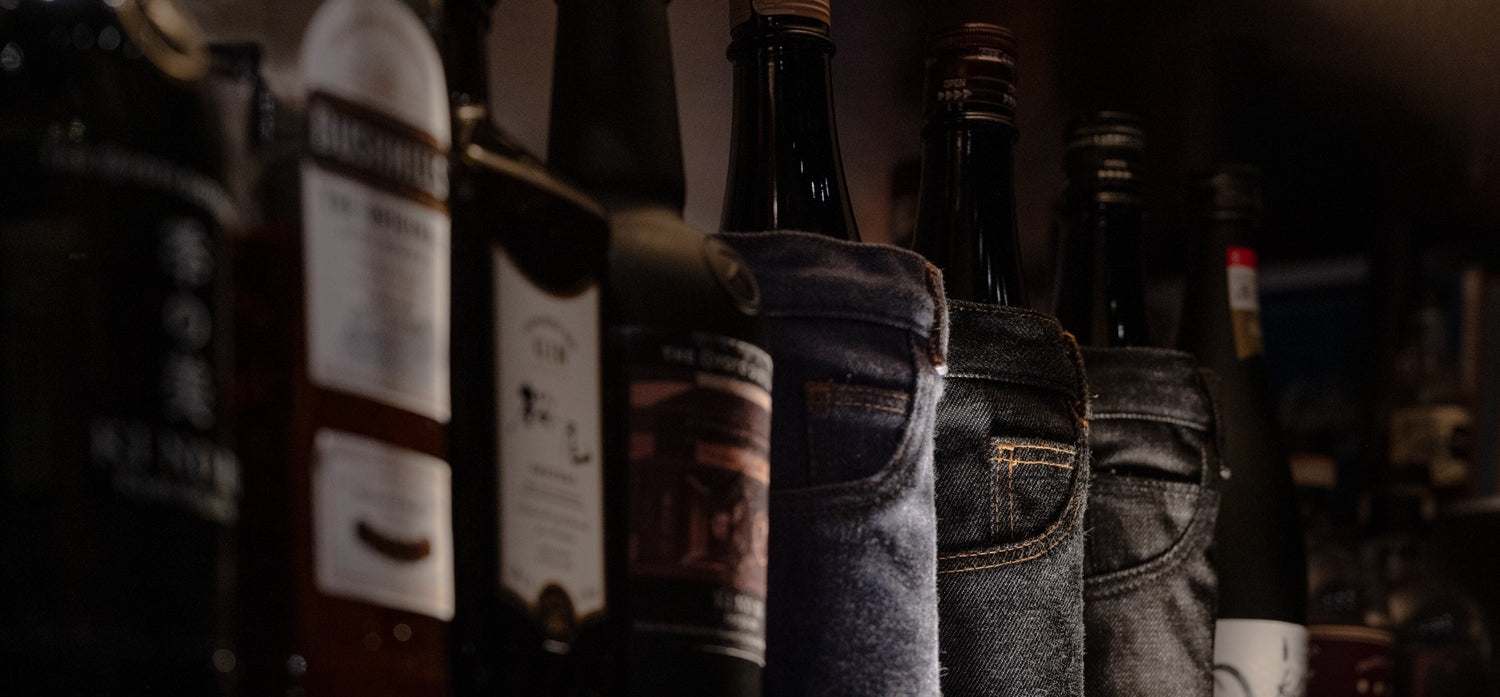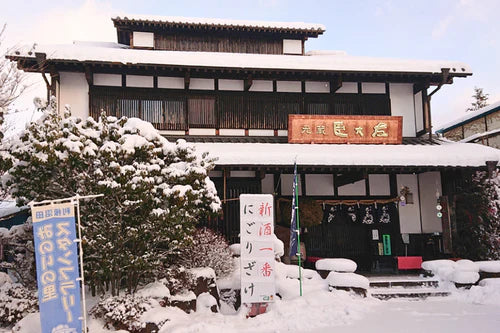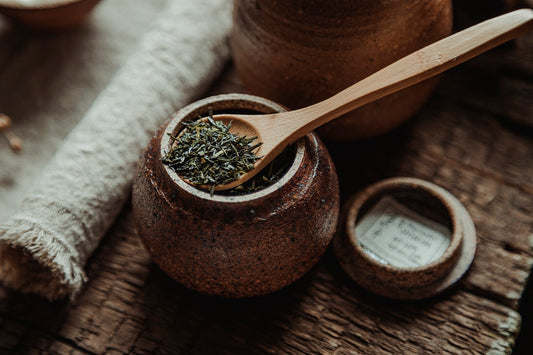Sake and wine, are two fermented beverages that have captivated humanity for centuries. Both boasting rich cultural legacies, they are cherished worldwide.
Despite sharing a common thread as fermented drinks, they harbor distinct characteristics that set them apart.
To those accustomed to wine culture, sake may be perceived as "rice wine." However, this notion is a gross oversimplification.
This article delves into the key distinctions between sake and wine, unveiling their unique charms.
Ingredients and Production Process

Sake Production Process
1. Polishing of brown rice
The process of crafting sake starts with the meticulous polishing of brown rice. As the rice polishing ratio increases, so does the elegance of the sake’s flavor.
Varieties like Ginjo-shu and Daiginjo-shu are celebrated for their exceptionally high rice polishing ratios, resulting in a refined and sophisticated taste.
2. Fermentation and Brewing
Polished rice is washed, steamed, mixed with koji, and fermented.
Sake is made through a complex process called parallel double fermentation. Rice is saccharified by koji, and yeast is added to the saccharified rice for fermentation.
During fermentation, the sugars are converted into alcohol, and sake is produced.
3. Aging and Bottling
Sake that has been “hi-ire” (heat treatment) is allowed to mature for a certain period of time to deepen its flavor.
Once stored, the sake is blended to ensure consistent quality, and water is added to adjust the alcohol content. The sake is then bottled and shipped.
To learn more about the sake production process, please click “Sake Brewing Process Part 1”and “Sake Brewing Process Part 2”.

Wine Production Process
1. Grape Cultivation and Harvesting
Wine production begins with the cultivation of grapes.
Because the raw material grapes contain large amounts of glucose, which promotes alcoholic fermentation, the wine is naturally converted to alcohol without any special treatment.
Due to this simplicity, the quality of the final wine largely depends on the quality of the grapes. This is why it is said that 80% of the success or failure of winemaking hinges on the grapes. Additionally, the taste of wine varies greatly depending on the harvest time and variety.
2. Pressing and Fermentation
The harvested grapes are pressed and the juice is fermented. Unlike sake, wine is made by a simple process called mono fermentation. The grape juice is simply fermented with yeast. Red wine is fermented with the skins, which adds color and astringency.
3. Aging and Bottling
Once fermentation is complete, the wine is transferred to barrels or tanks for aging. The length and method of aging can make a significant difference in the flavor of the wine.
Barrel aging allows the wine to soak up oak aromas and adds complexity and depth to the flavor. Tank aging, on the other hand, preserves the natural freshness of the fruit.
The aging period depends on the type and quality of the wine and can take from a few months to several years. After maturation, the wine is bottled. Before bottling, the wine is filtered to remove lees. After bottling, the wine continues to age slowly in the bottle until it is ready to drink several years later.
Differences in Taste and Aroma
Sake Taste and Aroma

Sweetness and Umami
Sake is characterized by the sweetness and “umami” of rice. Umami is the rich, savory taste sensation you get when you taste a particular food or drink. Ginjo and Daiginjo sake have fruity aromas, while Junmai sake offers a rich, deep flavor.
Alcohol Content and Flavor
Sake generally has an alcohol content of 13-16%. Because the flavor changes with temperature, sake can be enjoyed in a wide range of temperatures: cold, normal temperature, and warm. Another characteristic of sake is that its flavor changes dramatically depending on the temperature.
Wine Taste and Aroma

Acidity and Tannins
Wine is known for its acidity and tannins. Red wines are more tannic and white wines are more acidic. Rosé wines are more balanced in flavor.
The tannins in red wines come from the skins and seeds of the grapes, resulting in a bold and sometimes astringent taste. On the other hand, the acidity in white wines often brings crispness and freshness.
Alcohol Content and Flavor
Wine generally has an alcohol content of 12%. Depending on the grape variety and production method, it can have fruity, spicy, or floral notes. For instance, Chardonnay often exhibits buttery and oak flavors, while Pinot Noir is known for its earthy and berry characteristics.
Additionally, the region where the grapes are grown can significantly influence the wine's taste and aroma, adding another layer of complexity to its profile.
Pairing and Enjoyment
Sake Pairing

Pairing with Japanese Cuisine
Sake is an alcoholic beverage that goes well with Japanese cuisine. It can be enjoyed with a wide range of dishes such as sushi, sashimi, and tempura.
One of the reasons sake and Japanese cuisine go well together is that sake's sweetness and umami go well with dishes that contain sour, salty, or bitter flavors, such as pickles, seafood, and soy sauce-based dishes. See also here for sake pairings.
Unexpected Pairings with Western Cuisine
Sake is loved around the world for its delicate flavor and diversity of tastes. Sake is not only a perfect match for Japanese cuisine but surprisingly also for Western cuisine. Its rich flavor blends harmoniously with Western cuisine such as cheese, pasta, and steak, enhancing the flavors of the food.
Wine Pairing

Color-matched pairing
Matching colors is one of the basic points in wine and food pairing. In particular, when pairing wine with main meat or fish dishes, it is advisable to choose the type of wine according to the color of the food.
For example, white wine is recommended for white meat fish (flounder, sea bream, sea bass, cod, etc.). On the other hand, red wine is recommended for red meat fish (tuna, bonito, yellowtail, etc.). Similarly, white wine is recommended for white meat (chicken, pork, rabbit, etc.), and red wine for red meat (beef, lamb, duck, venison, etc.)
Enjoying Dessert Wine
Dessert wines have a strong sweet taste and go well with chocolate and fruit desserts. In addition, dessert wines have a low alcohol content, so they can be enjoyed by people who do not normally drink alcohol.
Which one suits your taste?
Sake and wine have different attractions, but both are wonderful beverages. We hope that this article will help you understand the differences between sake and wine and help you to enjoy them more deeply. As a next step, we encourage you to actually try a variety of sake and wine and find your own favorites.





